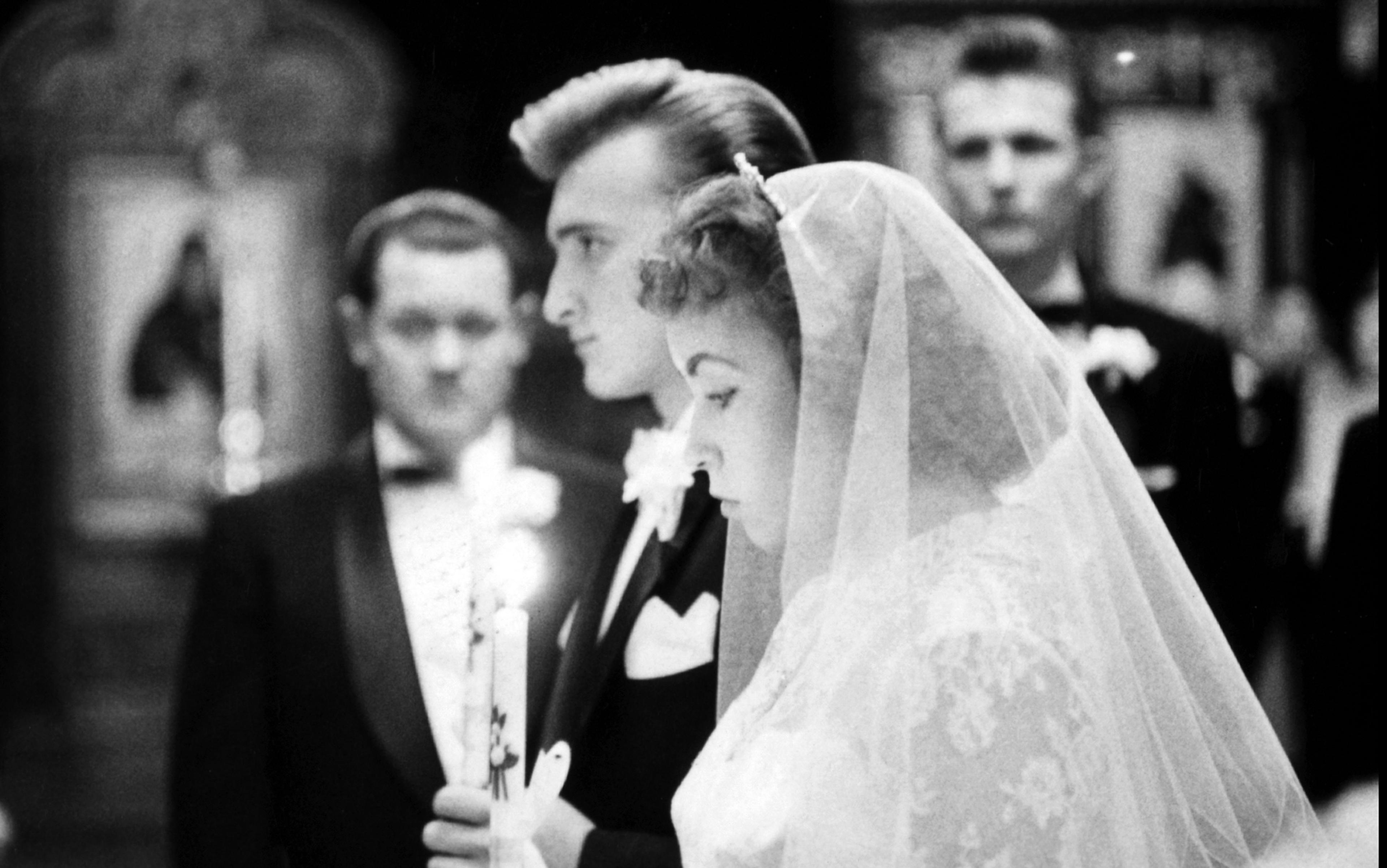‘I want a man who’s kind and understanding. Is that too much to ask of a millionaire?’
Zsa Zsa Gabor, actress and socialite (1917-2016)
The search for ‘the one and only’ romantic partner, our second half who will love us forever and a day, and will light an eternal fire in our loving heart, has been a frustrating undertaking for many people. But why? Could the goal be unrealistic? Can we improve our strategy, and our chances, or should we give up the search?
The search for ‘The One’ can indeed feel futile. You might test what can feel like endless candidates and not find anyone you really like. You can travel great distances but never reach the Promised Land. Even when this land seems to be found, there is no lifetime guarantee, and the expiration date of this happy kingdom might be brief. Breakups, not long-term relationships, appear to be the norm. In many societies, about half of all marriages end in divorce, and lots of the remaining half have at some point seriously considered it.
In light of these difficulties, doubts have been raised concerning the value of this kind of search. One person might dismiss the quest altogether. ‘Done with trying to find a woman for life. Much easier to just hook up for a good short time. Avoid all the other personal drama!’ as one man told me. Another stops the search early, after finding profound love and connection when very young. ‘I’ve never regretted not ordering the fish when my steak arrived cooked and seasoned to my liking,’ said a woman who married her first lover. Yet others say they’ve found The One yet continue sampling what’s out there. ‘I want both – a long, profound love and a series of short, intense romantic-sexual experiences. Lust and profound love are both meaningful and satisfying for me,’ another woman explains.
Perhaps not surprisingly, the third option is preferable for most singles, at least in the United States: the eighth annual ‘Singles in America’ (2018) study from the dating site Match, supervised by the biological anthropologist Helen Fisher and the evolutionary biologist Justin Garcia, both of the Kinsey Institute at Indiana University in Bloomington, indicates that 69 per cent of today’s singles are looking for a serious, long, romantic relationship at the same time, nonetheless, as they are experiencing diverse, brief types of superficial, sexual relationships. For instance, many singles, especially women, have dated multiple people simultaneously. Most heterosexual singles would be open to a threesome, the report reveals, and one in four would have sex with a robot.
It is likely that these attitudes will continue after meeting the person who seems to be The One. In a 1996 study of sexual exclusivity among dating, cohabiting and married women, the sociologist Renata Forste at Brigham Young University in Utah and the public-health scientist Koray Tanfer in Seattle found that, if a woman has a history of multiple sex partners, the likelihood of her having a secondary sex partner during a current relationship greatly increases. It seems that personality tendencies and sexual habits are the main factors here. These findings do not reject the value of the search for The One, but rather suggests that this person, once found, might not be all alone.
Despite these kinds of caveats, when it comes of finding The One, strategy counts, starting with the very definition of ‘perfect’. One dictionary definition is flawless: being entirely without fault or defect. The other is most suitable: being as good as possible, and completely appropriate. While the first meaning focuses on eliminating the negative, the second centres on finding as much positive as one can.
Clearly, the search for the flawless person is an exercise in utter futility. Through this lens, the beloved is seen as a kind of icon, without relation to the partner. Here, one looks at qualities that stand on their own, such as intelligence, appearance, humour or wealth. This sort of measure has two advantages – it is easy to use, and most people would agree about the assessments. It’s an approach that takes a static view, in which romantic love is essentially fixed – and that’s something we know doesn’t work well in the real world.
On the other hand, looking for the most suitable person under a given set of circumstances might allow you to build an intimate connection, and could yield a flourishing partnership. This view emphasises the uniqueness of the relationship; it sees the beloved’s most important qualities in relationship to the partner, and offers a dynamic kind of romantic love over time. Such love involves intrinsic development that includes bringing out the best in each other. The suitability scale is much more complex, since it depends on personal and environmental factors about which we do not have full knowledge.
The view is supported by the philosopher Iddo Landau of the University of Haifa in Israel and the author of Finding Meaning in an Imperfect World (2017). He distinguishes between two life strategies: aspiring to be the best, and aspiring to improve. The first can lead us down an endless, unproductive path of frustrated competition, while the second brings meaningful development over time. The same type of distinction applies to romantic love. If romantic meaning mainly concerns achieving the best, lovers will always be restless, consumed with concern about missing the perfect person, or perhaps the younger, the richer or the more beautiful one. If, however, romantic flourishing mainly involves improvement, achieving it lies much more in our hands.
Ultimately, both scales count. So in seeking a true life partner, it’s worth considering the equation for yourself. Should you marry a smart person? Generally speaking, intelligence is considered good – but here is where things get more complicated. If there is a big gap between the IQ of the two partners, their suitability for each other will be low because, in this particular realm, the trait, though nonrelational, is significant to relationship success.
The same goes for wealth. On the nonrelational scale, a lot of money is often good, but a wealthy person might score low on fidelity (fat bank accounts open many romantic doors). Moreover, wealthy people tend to believe that they are more deserving, and hence their caring behaviour might be lower. In the same vein, having a good sexual appetite is usually good, but a large discrepancy between the partners’ sexual needs is not conducive to that crucial romantic connection. If, for instance, a man wants to have sex once or twice a week and a woman wishes to have sex multiple times a day, would they be suitable partners? Clearly not. And even if all these nonrelational factors match up, partners still won’t bring out the best in each other unless they truly connect.
For many people, the quest for the perfect person based on qualities such as beauty, intelligence and wealth (instead of the perfect partner, who offers connection and flourishing) is a major obstacle to finding The One. Since life is dynamic and people change their attitudes, priorities and wishes over time, achieving such romantic compatibility is not a onetime accomplishment, but an ongoing process of mutual interactions. In a crucial and perhaps little-understood switch, perfect compatibility is not necessarily a precondition for love; it is love and time that often create a couple’s compatibility.
Can a person cognisant of the two scales use this knowledge to aid the quest? There’s a calculus, it turns out. We all know the drill. You compile a checklist of the perfect partner’s desirable and undesirable traits, and tick off each trait that your prospective partner has. This search approach is pretty much how online dating works: it focuses on negative, superficial qualities, and tries to quickly filter out unsuitable candidates. Eliminating bad options is natural in an environment of abundant romantic options.
But the checklist practice is flawed because it typically lacks any intrinsic hierarchy weighting the different traits. For instance, it fails to put kindness ahead of humour, or intelligence before wealth. And it focuses on the other person’s qualities in isolation, scarcely giving any weight to the connection between the individuals; in short, it fails to consider the value of the other person as a suitable partner.
Close partners sculpt one another in a manner that brings each individual closer to his or her ideal self
Benjamin Franklin, one of the US Founding Fathers, counselled his nephew to use knowledge to find a wife: one should proceed like a bookkeeper, he advised – list all the pros and cons, weigh up everything for two or three days, and then make a decision. But research from 1999 by the psychologists Gerd Gigerenzer of the Max Planck Institute for Human Development in Berlin and Daniel Goldstein, now at Microsoft in New York, shows that computer-based versions of Franklin’s rational bookkeeping manner – a program that weighed 18 different cues – proved less accurate than following the rule of thumb: ‘Get one good reason and ignore the rest of the information.’
Still, under clear-cut circumstances, the checklist can work. When the feeling is outright disinterest, you can eliminate the individual based on some unacceptable objective trait (such as an unpleasant laugh or dandruff) and a lack of simpatico. So the score for that person on both scales would be: superficial and negative.
Sometime it’s the opposite: you fall madly in love. The physical attraction strikes you like a flash of lightning, and you want be together forever. No question, love at first sight is intense. Such love can be the basis of profound, long-term love, if the characteristics revealed in later acquaintance with The One enhance – or at least do not contradict – those you assumed initially. Just remember, love at first sight is double-edged. On the one hand, the initial positive impression has a positive impact upon the quality of the evolving relationship. The researchers Michael Sunnafrank at the University of Minnesota and Artemio Ramirez at the Ohio State University demonstrated in 2004 that initial evaluations have significant positive influence on relationships over the long-term. Hence, if love at first sight develops into a long-term relationship, that relationship has a greater chance of achieving higher quality.
But love at first sight based on an abundance of outward traits such as beauty, elegance, charisma or wealth is superficial, and could leave you in the lurch. This superficial manner of choosing a partner could have a negative impact upon the subsequent relationship because it often ignores profound flaws. The love can be intense, but not necessarily profound. The brevity of time in which the partner is selected prevents a person from identifying meaningful compatibility, which is vital for long-term love. Score: positive but superficial.
Then there’s the scenario in Graeme Simsion’s popular novel, The Rosie Project (2013). The protagonist, Don Tillman, is a university professor seeking a wife, and so he prepares a detailed list of what he’s looking for in a woman: someone intelligent but also a good cook, who is physically fit, as well as a teetotal nonsmoker. Don rules out many women until he meets Rosie, a bartender who smokes, drinks and otherwise fails on most of his criteria. Together, they search for Rosie’s biological father and, in the process, Don falls in love with Rosie. It is not her individual characteristics that generate his love. It is the harmony he feels while spending more and more time with her, which makes all the difference. There’s something ‘off’, but you like – okay, love – the person anyway. After all, we can learn to live with superficial flaws, but profound flaws and lack of intimacy pose a real danger to a long-term loving relationship. Score: negative but profound. This is a life worth considering – and better, by the odds, than the options above.
Finally, you might hit the jackpot. You like the outside package, and you bring out the best in each other, all at once. In 2002, the social psychologist Stephen Drigotas at Southern Methodist University in Dallas demonstrated that when a close romantic partner sees and acts toward you in a manner that matches your ideal self, you move closer to that self, an effect he calls ‘the Michelangelo Phenomenon’. Just as Michelangelo saw sculpting as his process of releasing the ideal forms hidden in the marble, our romantic partners ‘sculpt’ us. Close partners sculpt one another in a manner that brings each individual closer to his or her ideal self, thus bringing out the best in each other and making both feel good about themselves. In such relationships, we see personal growth and flourishing in statements such as: ‘I’m a better person when I am with her.’ Score: positive and profound.
For most of human history, marriage was a practical arrangement designed to enable the couple to meet their basic survival and social needs. Passionate love had precious little to do with it. The American historian Stephanie Coontz, the author of Marriage, a History (2006), shows that this ideal emerged only about 200 years ago. She observes that: ‘In many cultures, love has been seen as a desirable outcome of marriage, but not as a good reason for getting married in the first place.’ The French philosopher Pascal Bruckner, the author of Has Marriage for Love Failed? (2010), argues that in the past marriage was sacred, and love, if it existed at all, was a kind of bonus; now, love is sacred and marriage is secondary. Accordingly, the number of marriages has been declining, while divorces, cohabitation and single-parent families are increasing. It seems that, as he puts it, ‘love has triumphed over marriage but now it is destroying it from inside’.
In addition to the pragmatic and the loved-based marriage types, the psychologist Eli Finkel at Northwestern University in Illinois adds the personal fulfilment marriage – or, as his book puts it, The All-or-Nothing Marriage (2017) – which developed in the US around 1965. As the growing demands of marriage make it impossible to find a partner who excels in all important areas, Finkel presents this third type of marriage, which requires that we compromise and accept a partner who is in some important ways good enough, if not the very best. Rather than aim high with an ideal marriage, we should be satisfied with a less-than-perfect marriage that enables us to have a family and to thrive.
Yes, there’s an optimal prescription for finding The One, but that doesn’t abolish the possibility of never finding the romantic partner of your dreams. For your own flourishing, you might need to settle for less. The question is, how much ‘less’ can your partner be, and still be a sufficiently good partner? This is a complex issue because someone who initially seemed barely good enough can turn out to be the most suitable partner you will ever find.
‘Enough’ can be considered ‘as much as necessary’. Ideal love, however, seems to be about getting much more than that. In ideal love, enough is not enough, and you can’t get enough of your partner – the better she is, the more you want of her. Nevertheless, some people are not fortunate enough to have even a good-enough partner – they might merely have a ‘just enough’ partner or a ‘barely enough’ partner. Consequently, many people settle for a romantic partner who is no good for them at all.
As Carrie Bradshaw put it in the TV show Sex and the City (1998-2004): ‘Some people are settling down, some people are settling, and some people refuse to settle for anything less than butterflies.’ However, it is possible that with age and experience it is somewhat easier to accommodate ourselves to what we have, and be satisfied with it. Indeed, Confucius said that only when he reached 70 was it possible that ‘I could follow the dictates of my own heart; for what I desired no longer overstepped the boundaries of right.’
The American economist and Nobel laureate Herbert Simon in 1956 combined the words ‘satisfy’ and ‘suffice’ to come up with ‘satisfice’, a term for an adequate solution rather than one that maximises utility. A ‘satisficing’ solution can be the best choice when we take into account the cost of looking for alternatives. In Simon’s view, since the human capacity for knowledge is limited, we would do well to take a realistic approach to seeking optimal solutions, which are not necessarily those that maximise the possible gains. Simon’s considerations are relevant to the romantic realm, in which there are further complications concerning our inability to predict our partner’s attitude in the long term, as well as our response to that attitude. This makes finding a good-enough partner even more important.
Women with PhDs are twice as likely to settle for Mr Good Enough as women with a high-school education
Also relevant is the American philosopher Harry Frankfurt’s rejection of the ‘doctrine of economic egalitarianism’, which holds that everyone should have the same amount of income and wealth. Instead, Frankfurt subscribes to his ‘doctrine of sufficiency’, the notion that everyone must have enough. When following economic egalitarianism in romance, people focus their attention on what others have, rather than on what is intrinsically valuable for them. For Frankfurt, being content is a matter of one’s attitude toward what one has and not toward what others have. Thus, he claims that we don’t ordinarily criticise a man who deeply and happily loves a woman who is altogether worthy, just because we think he might have done even better. A nicer-looking, wiser and wealthier woman might not be as good for him if her attitudes do not jibe with his. It is not mainly the external, objective, measurable qualities that count in what is good for you, but the interactions between you and the other person.
Having a good-enough romantic partner implies that we are content with our partner inasmuch as that person suits us, and not necessarily because this person is the most perfect individual in the world. Accordingly, we don’t have an active interest in seeking someone else, we are content with our lot, and we don’t see our situation as needing urgent improvement. One survey, by the site Make Friends Online, found that women with PhDs are twice as likely to settle for Mr Good Enough as women with a high-school education. Although we cannot avoid comparing ourselves with others, what counts most in romantic love is the flourishing of our own, unique connection.
When you think of your partner as good enough, you realise what is most valuable for you. This doesn’t mean that you shouldn’t aim at increasing the profundity of your romantic relationship, but that such improvement will mainly relate to developing the connection with your current, good-enough partner. As in the story of the pot of gold buried in the garden, sometimes the treasure can be found right at home.
Yet admitting that your partner is just good enough also means admitting that this partner cannot fulfil all of your needs. In our endlessly evolving culture, this has led to other forms of relationship: in an open sexual marriage, the basic thinking goes that the marriage is essentially fine – the problem is in declining sexual desire. Adding new sexual partners takes care of this.
Polyamory ups the ante by making space for multiple partners across genders in a marriage or a committed relationship. Here, the void in a two-person relationship is considered not just sexual but romantic too, as one person cannot fulfil our entire romantic and other significant needs. Hence, we cannot be satisfied with merely adding one or a few sexual partners; we need to add at least another romantic partner, who can satisfy a host of intimate needs where the first partner falls short.
The basis of polyamory is the contention that happiness requires the fulfilment of all your needs. But another, more promising possibility for most people would be to try to be happy with what you have, even without fulfilling all of your desires. After all, we are limited creatures living in an environment that is mostly beyond our control.
In my book The Arc of Love (2019), I take an optimistic perspective. Not only is an enduring, profound love possible, it is also more common than most of us think. Yet the romantic road is often bumpy and long. Enticing romances encounter many blind alleys. How is the would-be lover to know when such romances are promenades for flourishing love – and when they are dead-end streets?
Love is not all you need; but if you have enough of what you need, and love infuses life with joy, your life is more likely to be, as the classic song has it, a many-splendored thing. The ideal romantic relationship is one that helps both partners to flourish. Different people and different circumstances call for different decisions to make that happen. If there is any recipe at all, it would start with the quest for optimal balance. Today’s romantic reality infuses us with the desire for great diversity but ultimately restricts flexibility. While we cannot romantically indulge in everything we want and still stay healthy, we also don’t need to go on a hunger strike. Adopting a moderate diet never killed anyone.






